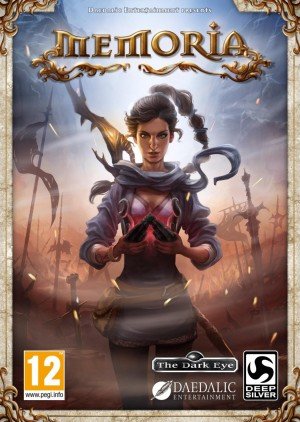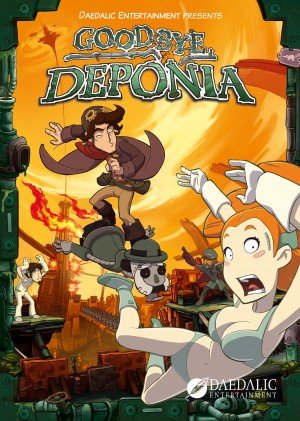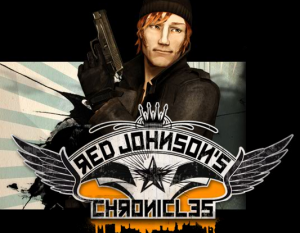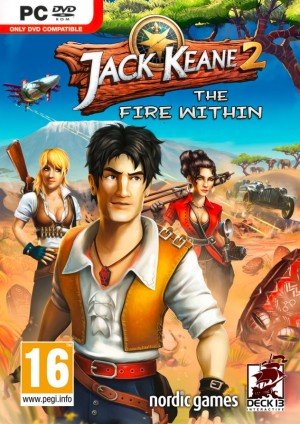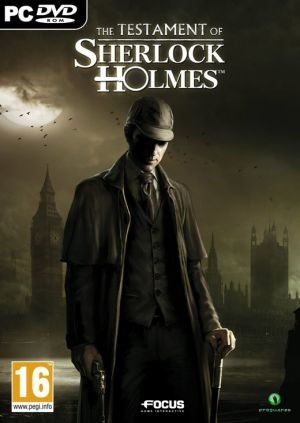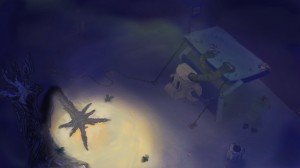E3 2013 - Daedalic Entertainment archived preview
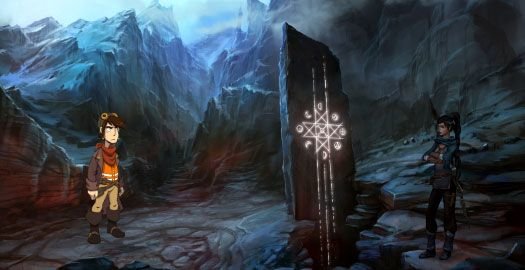
While adventure games continue to evolve and change (for better or worse) to meet the increasingly dynamic expectations of the gaming audience, at least one prominent developer has found a great deal of success remaining faithful to the 2D point-and-click conventions. Germany’s Daedalic Entertainment continues to create some of the most intriguing – and often graphically impressive – adventures that use the classic interface most adventure purists love.
At E3 this year, they were on hand demonstrating a number of their games. Gene Mocsy was showing off the most recent build of his 1954 Alcatraz adventure, but since we already previewed that game after GDC, it was two sequels that Daedalic is about to release which I was most interested in getting a sneak peek at.
Memoria
The first is Memoria, a classic adventure set in the same Dark Eye universe – and featuring the main protagonist – of Daedalic’s previous Chains of Satinav. The universe itself is based on Europe’s tabletop fantasy RPG equivalent of Dungeons & Dragons, but like its predecessor, Memoria is a classic point-and-click all the way.
The sequel will offer a narrative split between two main characters, and two very different time periods. Chronologically, the first part of the story is told through the eyes of Sadja, a princess who once wished to become a mighty heroine by joining an epic battle against a demon invasion. Unfortunately for Sadja, her quest was not successful – an interesting twist that is revealed to the player at the start of the Memoria’s tale. The second part of the story takes place 500 years later as Geron, the hero of Chains of Satinav, begins a new journey to discover whatever became of Sadja. “We wanted to make a game where the story itself was the puzzle,” said Daedalic’s lead game designer Kevin Mentz. “The puzzle itself is figuring out what happened to this great heroine.”
Memoria will take place across eight chapters. The first chapter was on display at the conference, and showed some of the new puzzle gameplay. In the demo, a young mage used a combination of inventory items and magic spells to bring to life a series of stone golems in the depths of an ancient dungeon. While the mage was trapped in a different room than the golems, he was able to activate them at different points in order to to pull an iron chain which could free him. The puzzle required thinking of the ways the different golems could work together to be successful, when they should be activated, and how each could affect the other. It was the type of puzzle that might be agonizing to work through, but obvious in hindsight.
Mentz was enthusiastic about how each challenge in the game builds on previous puzzles, and that in general, Memoria will offer a much deeper experience than Chains of Satinav did. However, the game does feature an option to identify hotspots, as well as a hint system. The interface also includes an impressively detailed fantasy map which gets painted in as the player progresses through their adventure. "Memoria has a much more epic scope than Satinav,” Mentz said. “The first game was much more personal and more of a fairy tale. This is a huge tale.”
Although displaced in time, Sadja's and Geron’s two storylines are experienced as parallel stories in Memoria, and the character you’re playing switches at the beginning of each chapter. However, as you reach the seventh chapter, the actions that each protagonist has taken begin to affect the other, leading to what Daedalic promised to be a very intense – and unexpected – climax. “In the last chapter, the two storylines will merge in a very interesting way that I don’t want to spoil for you,” Mentz said.

Like much of Daedalic’s work, it was hard not to be impressed with Memoria’s hand-painted artwork. Like Satinav, the new game leans heavily on the lore and art style of the Dark Eye RPG. The spell and lighting effects, along with the dark, foreboding corridors of the dungeon that were displayed in the demo, offered startlingly immersive portals into the dark fantasy world that Daedalic introduced us to last time.
The game is slated for an August release on PC and Mac, so there’s some work to be done, but it’s difficult not to be excited about a game that not only looks this good, but will also showcase an innovative way to tell a story torn between two different time periods.
Goodbye Deponia
The next sequel Daedalic will be releasing this autumn is Goodbye Deponia, the conclusion to Rufus’s misadventures on the titular trash world. The finale is slated for October, and E3 provided the first chance to see the game in action. Fans of the Terry Pratchett/Douglas Adams mash-up world of Deponia look like they’re in for a treat as Goodbye offers much, much more of the series’ trademark farcical comedy. That being said, there’s probably not too much new – besides some pretty creative puzzles – for those who played the first two games and still don’t quite get the joke.
The creation of Daedalic’s co-founder and creative director, Jan “Poki” Müller-Michaelis, Goodbye Deponia will wrap up all of the different character arcs introduced in the first two games of the series. The game opens up with Rufus losing (again) his ever-suffering paramour Goal. In order to get her back, he decides to clone her – but like most of Rufus’s plans, things go awry and he clones her as a baby. In addition, the villainous Arganon from the skybound Elysium are still threatening to destroy the junk-strewn world of Deponia, and there remains the nagging issue of a fomenting rebellion on the planet's surface. In Goodbye Deponia, Rufus will finally have a chance to solve all three of these problems – or make a terrible mockery of an attempt.
The unusual gameplay element in the third installment derives from the fact that Rufus feels the only way to deal with all the myriad challenges he’s facing is to clone himself as well, so the player will actually control three different Rufuses (Rufusi?) through to the climactic finale.

The puzzles should again be familiar to series fans, featuring convoluted and comic brain-teasers that have become a staple of the franchise. However, by having three Rufuses, there are three different opportunities to interact with the world and the actions of each Rufus often impact the others. Non-lateral thinkers, this may be your worst nightmare.
(Small spoiler warning) In the demo, one Rufus was able to give a caffeine lollipop to a bearded baby (don’t ask) that caused the baby to spit out its pacifier, which fell all the way down into the sewers where another Rufus was waiting for it to solve a puzzle. Another situation wasn’t quite as fortuitous, as that same subterranean Rufus moved a light connected to a lamp at street level which turned to illuminate another Rufus, whose covert attempt to break into a rebel fortress was now foiled.
“The layers are always integrated in Goodbye Deponia," Mentz said. “There’s no difference between the different Rufuses, but they all access different areas.” One interesting feature is that once one of the Rufuses finds a way to contact another – in the demo, we saw the subterranean version reach another through a street drain – they are able to freely trade any collected items between them at any point.

The art style continues the cartoon look and feel of the early games, offering very much more of the same. Deponia itself is a post-modern collage of science fiction worlds, and the comically-evocative color palette, combined with the absurd animation of its players, works just as well in this entry. The soundtrack was also impressive and well-integrated in the version I saw, with musical interludes providing nicely executed thematic and locational cues. The Peter Gunn-style theme that serenades Rufus as he attempts (unsuccessfully) to break into the rebel headquarters offers a charming example of the game world's sensibilities.
Daedalic has promised to wrap up all of the different storylines that the series has introduced, which is no small task considering the rogue’s gallery of villains and friends that Rufus has met (and will meet) throughout his journey. Daedalic also hinted that Goodbye Deponia will be a deeper and more emotional experience than its predecessors, and explore some more serious themes, but they weren’t spilling any secrets yet. “This is the conclusion of the story arc,” Mentz said. “It’s also a good stand-alone adventure for those who haven’t played the first two. The story in this one will be much more dramatic and in the grand finale, everything comes together.”
With three different adventures on display, Daedalic’s showing at E3 was impressive, and it’s always welcome to see a studio as capable as Daedalic remain committed to the genre and telling engrossing, captivating stories with point-and-click-style gameplay. In Memoria and Goodbye Deponia, the classic adventure game fan has a lot to look forward to from the Hamburg-based studio in the coming months.



